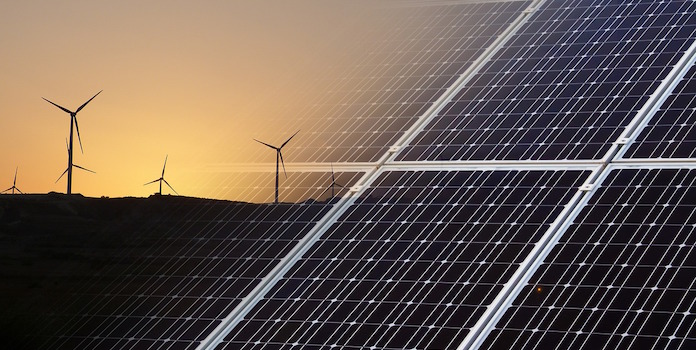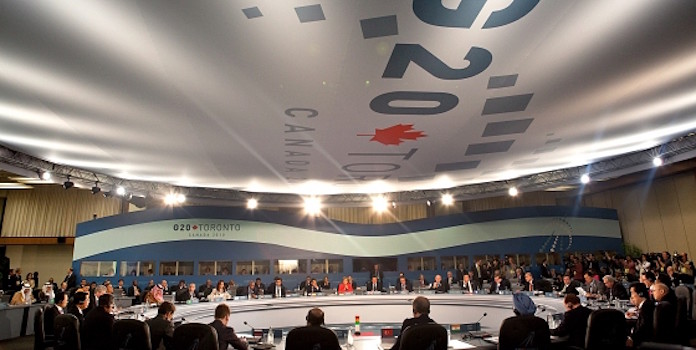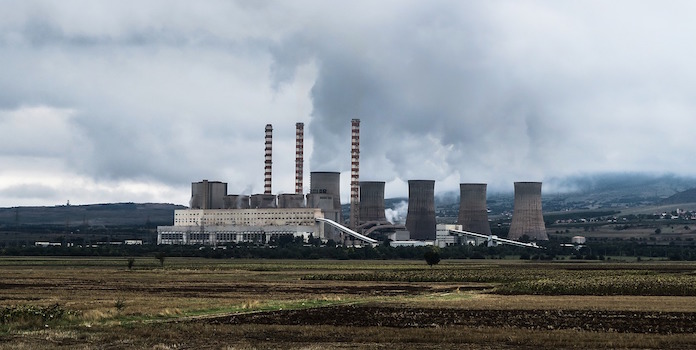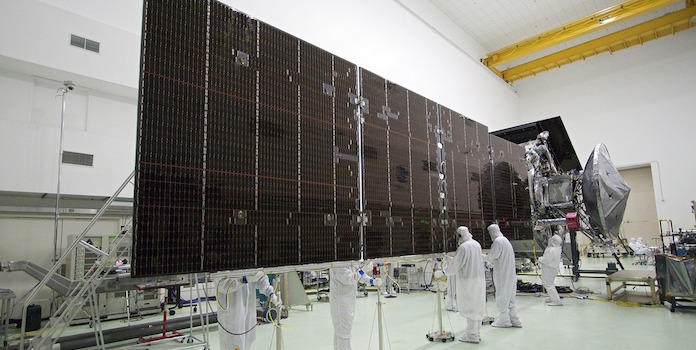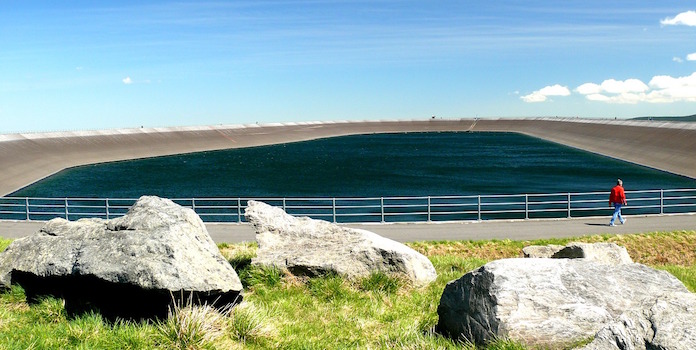Problems with Solar Energy – Why Solar Hasn’t Taken Over the World (Yet)

Why are we experiencing problems with solar energy?
If solar is so absolutely great, and we’re hurtling towards a climate catastrophe, why does it only power about 2% of the world? If it’s the panacea to our problems, why aren’t solar panels adorning rooftops the world over? What are the causes behind the problems with solar energy that we face?
To answer such questions, we at UnderstandSolar have dug into the facts and present the fruits of our labor below – an unfortunate tale of G20 hypocrisy, the Concorde fallacy (find out what this is later), and the sobering fact that we still need fossil fuels to power our planet (at least for now).
Our story begins with a brief interlude into 17th-century French economics and the reason why, despite our best intentions, we end up making decisions based on our emotions.
Laissez Faire’s Golden Rule
In 17th-century Europe mercantilism, the government regulation of trade, was in. Finance ministers restricted trade with their economic rivals, made sure that exports were greater than imports, and introduced hefty taxes and tariffs. Then, a mercantilist minister asked a group of Frenchmen, headed by M. Le Gendre, what the French government could do to help the economy. Le Gendre replied, “Laissez-nous faire”, or in English, “Leave it to us.”
And thus, laissez-faire economics was born – a system in which goods travel unmolested by governments. In such economies, goods naturally flow to where they fetch the highest price, i.e. where demand is strongest, and where their use is greatest. Likewise, among goods of equal quality, the cheaper goods will always win.
Why does this concern us? Because unfortunately, leaving society to transition to solar based purely on environmental reasons can’t be relied upon. Without government intervention, solar energy will win out only if it’s the cheapest.
Why Society, By and Large, Doesn’t Care About Saving the Environment
According to Jonathan Haidt, author of The Happiness Hypothesis, emotion is like an elephant, and rational thought its rider. The rider can do its best to influence and train the elephant, but ultimately, what the elephant wills, the elephant does. So despite our best intentions, most of us are governed by our emotions.
What has this got to do with solar power?
From the rider’s perspective, it’s clear that solar is a superior form of energy over fossil fuels. The former is infinite in supply, clean, and abundant in many regions of the world. The latter are finite, cause pollution, and – worst-case scenario – could bring us to an apocalyptic world filled with toxic fumes and devoid of animal life. Thus, going with the precautionary principle, solar’s a clear winner.
But the elephant doesn’t comprehend the global ramifications of greenhouse gasses. Hunter-gatherers’ brains weren’t built for that stuff. You don’t see “End the environmental crisis by transitioning to solar economy” anywhere on Maslow’s pyramid of needs.
So, much like with our diet and exercise, emotions override reasoning. The rider’s environmental thoughts go out the window. Instead of environmental pursuits, the majority of humans will seek out what they always have: food, water, and relationships. Or the resource that buys all three – money.
Of course, this isn’t the entire reason we as a society aren’t moving towards renewable energy. From a more concrete perspective, with the fossil fuel industries being such a huge ultra-stable business, there’s money to be made – or lost – on what happens in the future. As renewables account for more and more electricity production, coal and gas companies will make less and less money.
And here’s the real problem. It’s not that a homeowner will need to buy some new fuel type to run their solar panels. The beauty of solar energy is that they run on a natural, endless supply of fuel that no single company or industry can exploit or control. When you go solar, you’re buying a technology, not a fuel.
For the coal and gas industries that make their money by providing fuel for electricity generation, the growth of renewable energy – by necessity – represents a slow death to their own existence. And as you can imagine, some will fight tooth-and-nail to keep that from happening. Hopefully, all this means is that there’ll be some angry folks who’ve made their fortune on fossil fuels that will be left in the dust as renewables proliferate.
Even still, no matter what some big company wants, people like things that are cheap. So to conclude this psycho-historical sojourn, for solar to win out it must be the cheapest option. Then, providing no government intervention, laissez-faire can do its job, and solar as an energy source will reign supreme.
And herein lies the first big problem with solar energy: it is far more expensive than coal, gas, and oil, and has only survived thus far propped up by subsidies from tree-huggers.
Or so we’ve been told.
As it turns out, solar is far more competitive than people would have you believe.
The Energy Industry’s Big Fat Lie.
Ask anyone what they think of solar power. They’ll probably reply, “It’s too expensive,” then maybe rant about how the aforementioned tree-huggers are bleeding the taxpayer dry paying for a wacky new-age energy revolution that we don’t need.
This view is hardly surprising, considering solar systems still cost around $10-30k to install. What is surprising is that solar power is already cheaper than fossil fuel alternatives, unsubsidized.
Notable data from the Lazard 2016 Levelized Cost of Energy study:
- Solar Crystalline PV (utility scale solar) is cheaper than all conventional energy sources.
- Wind, at its lowest point, is the cheapest energy source available.
- Renewables have far better price stability than their fossil fuel counterparts.
- The societal cost is not included, i.e. the cost of combating pollution-related health crises.
- Solar PV (d) is $92/MWh with battery storage. Thus, with storage, solar is still competitive with coal and natural gas, but not gas combined cycle plants (a common type of power plant).
Are you still saying to yourself, “Solar is too expensive”? Well, 10 years ago – maybe. But now? Definitely not. Solar (and wind) energy is, in most cases, cheaper than a fossil fuel alternative. This then begs the question:
But if all things are equal and the cheapest option wins – if solar really is cheaper – then why are we stuck at a lousy 2% global penetration?
To answer that, let’s look at fossil fuel subsidies and the sunken cost fallacy.
Hypocrisy in the G20
The G20 summit brings together leaders from the twenty biggest economies in the world, with the premise of coordinating economic policy to tackle issues larger than any one government. In 2009, they focused their geopolitical clout to tackle fossil fuel subsidies.
Fossil fuel subsidies are a huge problem. Despite their often noble motivations – alleviate energy poverty, encourage industry, boost employment, and increase domestic power supply – they are often economically and environmentally disastrous. Case in point: a 2015 report from the Overseas Development Institute and Oil Change International stating that half of the world’s coal output in 2015 would’ve been unprofitable without subsidies (p.11).
Just what comes under the nebulous term of FF subsidies? R&D funding, exploration loans, equipment purchasing, funding transportation infrastructure like roads and ports specifically for fossil fuels, government-provided insurance, grants and tax breaks for plant production, efficiency R&D funding and decommissioning – the list goes on and on.
And while there are cases where fossil fuel subsidies are needed to increase energy supply (we’ll get to that later), there are others where the term “perverse incentives” would better replace “noble motivations.” Take the Deepwater Horizon oil-spill disaster, for instance: $15.3 out of the $20.8 million clean-up penalty was tax-deductible.
Despite their many faces, subsidies all do the same thing: artificially lower the price of fossil fuel energy, which undermines the competitiveness of renewables. Thus, one of the biggest problems with solar energy is the continued government support of fossil fuels.
And who is paying for all this unprofitable fossil fuel? You guessed it – you, the taxpayer.
“The scale and persistence of subsidies to fossil fuel production beg the question: who benefits from the financial transfers? The answer is clearly not the taxpayers of G20 countries. In reality, the beneficiaries include global energy companies that face increasingly tight margins.” – Oil Change International, 2015.
Just how much are these subsidies costing taxpayers worldwide? Despite the G20 pledging in 2009 to “rationalize and phase out over the medium term inefficient fossil fuel subsidies that encourage wasteful consumption,” global subsidies increased from $390 billion globally in 2009 to $493 billion in 2014, as oil prices doubled (though analysts estimate that, without the G20 plege, FF subsidies would’ve equled an even-more-staggering $610 billion in 2014).
Despite oil prices dropping, estimated subsidies for fossil fuel in 2015 amounted to a staggering $571 billion. At home, Uncle Sam increased fossil fuel subsidies by 35% from 2009-2015.
The Sunken Cost Fallacy: Why We Make Stupid Decisions
What we think we do: We make rational decisions based on the future value.
What we actually do: We base our decisions based on past investments – on “sunk costs.” The more we invest in something, the harder it is to abandon emotionally, so we plow on regardless of future value.
If for instance, you buy $500 worth of equipment to start a bespoke candle-making business, then carry on for fear of losing the $500 despite the international candle market taking a nose dive, you’d be falling prey to the sunken cost fallacy.
Likewise, if you’ve been in a relationship for a long time and have come to the conclusion that things aren’t working out, but stay together because you’ve invested a lot of time in said relationship, you’d be falling prey to the same sunken cost fallacy.
Perhaps the most famous example is the airline jet company Concorde. During its approximately 40-year production process, it ran massively over budget, and it became clear that Concorde would never be a commercial success. Yet, everyone plowed on, fearing the loss of the money they’d already spent. It cost £1.3 billion to produce and recouped barely 1/5th of that from its commercial career. Thus, the sunken cost fallacy is also known as the Concorde fallacy.
What applies to bespoke candles, romantic relationships, and supersonic planes also applies to G20 governments when deciding how to meet their energy needs.
The initial cost of fossil fuel energy is very high. Exploration, drilling, and building infrastructure are the lion’s share of the cost. But once that’s out the way, the cost of extracting fossil fuel becomes relatively cheap.
However, the more fossil fuels you extract from a given well or mine, the more expensive it gets. Huge initial investments make for a giant sunken cost, meaning that governments and their industrial partners forge on despite its unprofitability.
Then there’s the bigger sunken cost fallacy. The more you invest in fossil fuels (through subsidies), the fewer funds you have to allocate to renewables, so you continue to invest in fossil fuels.
Geopolitical Forces
Of course, we’d be naïve to think that it’s just the sunken cost fallacy at play here.
Consider this: if G20 2009 commitments held, by 2035, the fossil fuel industry would lose $28 trillion compared to business as usual.
$28 trillion is a non-too-trivial sum of money. If I had a vested interest in maintaining significant geopolitical power as the head of a fossil fuel conglomerate, I wouldn’t be happy that Elon Musk & co are rocking the boat. In fact, I might even try to stop that meddling by, say… spreading misinformation about climate change, attacking net-metering policies, or filling the campaign chests of climate skeptic politicians.
Oil Change International’s statement on the matter (page 58):
“As political interests often determine who receives subsidies and at what scale, the interests of those who benefit from subsidies can become entrenched over time and create significant barriers to their reform.”
But We Still Actually Need Fossil Fuels
The world’s economy is no small potato. Because of its grandiose size, it all needs rather a lot of energy to keep going. It would, again, be naïve to think that the world can transition to a renewable – never mind solar – economy tomorrow.
Even hyped-up on alarming levels of Red Bull, solar panel manufacturers wouldn’t be able to produce enough panels to meet global energy demand overnight. And even if they could, we wouldn’t have enough electric cars. And even if we had enough electric cars, we wouldn’t have enough electric boats. And so on, and so on.
The unfortunate fact of the matter is that we still need fossil fuels, and any transition to a clean-energy economy will take time.
Storage: Renewables’ Biggest Challenge
The intermittent nature of solar and other renewables is a genuine problem. Whereas fossil fuels can supply energy at any time of day, solar power needs to capture enough power during daylight hours to power society’s needs until the sun pops up again. This is compounded by the fact that energy demand peaks when the sun goes down. Bottom line: we need storage. Lots of it.
For a single house, no biggie. Just order a Powerwall, and boom – storage. Developing such storage for an entire nation, never mind the planet, is another matter entirely.
2016 world energy demand was roughly 13,000Mtoe (million tons oil equivalent), which is around 150,000 TWh, or roughly 414 TWh a day. To put that into perspective, a single Powerwall stores 10kWh. So you’d need 41,400,000,000 Powerwalls to store the daily energy demand of the world. I can’t speak for Mr. Musk on this matter, but I would assume that Tesla is not yet equipped to produce 41 billion Powerwalls.
Luckily, we don’t have to rely on Tesla’s small, albeit very stylish, storage options. Here’s what humanity has come up with so far:
Pumped Hydroelectric Storage (PHS)
How it works: You have an upper reservoir (image above), and a lower reservoir, connected by pipes with turbines. To store energy, you pump the water from the lower reservoir to the upper. To get it back out, release it from the upper to lower, causing the turbine to spin, producing electricity.
Where it’s at: As the only mature technology on this list, it’s the old-guard of energy storage, and in 2015 was responsible for 99% of energy storage worldwide.
Advantages: 70-85% efficiency, system lifetimes of over 40 years, and it’s cheap. Cheap as in $5 per 100 kWh.
Disadvantages: You need lots of water, and lots of space to build said giant reservoirs.
Numbers needed to power the world: Average energy storage capacities of these things are from 500-8000 MWh. Taking 4000 MWh as a medium capacity, we’d need around 100,000 of these and roughly 414 trillion liters of water.
Or, in more conventional units, 165 million Olympic swimming pools. Luckily, there are about 326 million cubic miles of water on Earth, so Mother Nature’s got us covered on that front.
Compressed Air Energy Storage (CAES)
How it works: Energy is used to compress air in large storage tanks or caverns. When the energy is needed, the air is decompressed, which drives turbines to generate electricity.
Where it’s at: There are only a few commercial CAES plants in operation. Research is being undertaken to improve them.
Advantages: It’s cheap. $2 per 120/kWh of storage cheap, and makes use of brownfield lands such as abandoned mines and salt caverns.
Disadvantages: You need huge caverns, so geography is a limiting factor, and cycle efficiency is at best, 70%.
Numbers needed to power the world: Average storage capacities are 580-2860MWh. Using 1500MWh, we’d need 276,000 CAES facilities.
Battery Storage
How it works: There are many, many varieties of batteries. Rechargeable batteries store energy by separating electrons and holes, which then recombine when the battery is connected to a circuit. If you’re looking for street cred, just explain that they operate via a reversible electrochemical reaction.
Where it’s at: In all honesty, we’re at the very beginning of battery storage on a large scale.
Advantages: Certain batteries (Li-ion) are extremely energy dense, typically storing around 300x the energy that an equivalent pumped hydropower system would in the same space. Plus, great efficiency: 75-97%.
Disadvantages: Cost. A solar economy with Li-ion storage at $2200/kWh would cost roughly $818 trillion. Also, useful lifetimes are around 15 years. $818 trillion is a pretty steep sum to be paying more than once.
However, with the electric vehicle industry burgeoning, these costs should come down with technology improvements and economy-of-scale.
How many we’d need to power the world: 41,400,000,000 Powerwalls 2.0s
Flywheels
How it works: You have a wheel inside a vacuum, i.e an environment without friction. Energy is used to accelerate the flywheel, which can then be de-accelerated to generate electricity.
Where it’s at: Early commercialization.
Advantages: Superb cycle efficiency: 90-95%. More energy dense than CAES and PHS with 20-80 Wh/liter. Li-ion still beats it, with 150-500 Wh/l.
Disadvantages: Daily energy losses are 20% minimum. In other words, cycling is efficient, but long-term storage is not. Also, lifetimes are 15-20 years, and they’re very expensive.
Numbers needed to power the world: At 0.0052-0.75 MWh a piece, we’d need roughly 1.2 billion flywheels. At a cost of $1000-5000/MWh, that would cost around $1,200 trillion. Ouch.
Final words on Problems with Solar Energy
The costs of energy storage should fall rapidly with economy-of-scale and technological innovations. Plus, there are a plethora of emerging technologies in their infancy not mentioned in this article. In particular, battery research goes way beyond Li-ion.
Furthermore, no renewable economy will consist of a) one energy source, and b) one storage option. Diversification is the name of the game. That said, energy storage remains a massive challenge, along with fossil fuels subsidies, to be faced on the road to a renewable energy economy.
Image Credits under CC License via Pixabay – 1, 4, 6, 7, 8, 9 and Wikipedia – 3, 5


